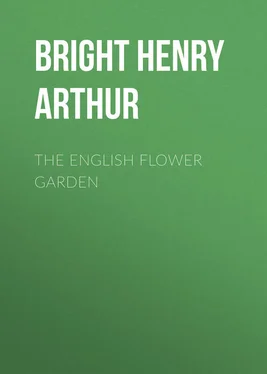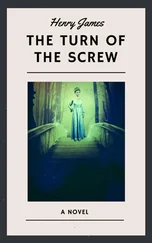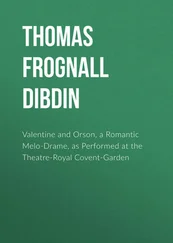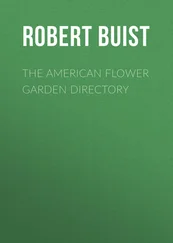Henry Bright - The English Flower Garden
Здесь есть возможность читать онлайн «Henry Bright - The English Flower Garden» — ознакомительный отрывок электронной книги совершенно бесплатно, а после прочтения отрывка купить полную версию. В некоторых случаях можно слушать аудио, скачать через торрент в формате fb2 и присутствует краткое содержание. Жанр: foreign_language, foreign_antique, foreign_prose, на английском языке. Описание произведения, (предисловие) а так же отзывы посетителей доступны на портале библиотеки ЛибКат.
- Название:The English Flower Garden
- Автор:
- Жанр:
- Год:неизвестен
- ISBN:нет данных
- Рейтинг книги:4 / 5. Голосов: 1
-
Избранное:Добавить в избранное
- Отзывы:
-
Ваша оценка:
- 80
- 1
- 2
- 3
- 4
- 5
The English Flower Garden: краткое содержание, описание и аннотация
Предлагаем к чтению аннотацию, описание, краткое содержание или предисловие (зависит от того, что написал сам автор книги «The English Flower Garden»). Если вы не нашли необходимую информацию о книге — напишите в комментариях, мы постараемся отыскать её.
The English Flower Garden — читать онлайн ознакомительный отрывок
Ниже представлен текст книги, разбитый по страницам. Система сохранения места последней прочитанной страницы, позволяет с удобством читать онлайн бесплатно книгу «The English Flower Garden», без необходимости каждый раз заново искать на чём Вы остановились. Поставьте закладку, и сможете в любой момент перейти на страницу, на которой закончили чтение.
Интервал:
Закладка:
But two formidable critics came into the field, Knight and Price. Their plan was to leave Nature as much as possible to herself, to let the stream wind about as a stream should, instead of being dammed into a canal, and to allow trees to grow as they liked. Price’s famous Essay on the Picturesque is still full of interest, and shows good sense in the exceptions he allows to his general rule, as, for instance, where he admits “architectural ornaments” in the garden round the house. He speaks, too, with regret of having once destroyed a beautiful old garden, “sacrificed to undulations of ground only.” But he certainly seems to carry his general rule to very considerable length. He thinks that “many of the circumstances that give variety and spirit to a wild place might successfully be imitated in a dressed place;” and although he cannot advocate modelling a carriage-drive after a cart-rut, or having water-docks or thistles before one’s door, he still thinks the cart-rut and the thistles might furnish useful hints. In another chapter he discusses “the connection between picturesqueness and deformity,” and explains how large heaps of stones or mould may at first be considered as deformities and afterwards appear picturesque. It is impossible not to be reminded of Mrs. Rafferty’s description of her garden in Miss Edgeworth’s Absentee : “‘Yes,’ she said, ‘she hated everything straight; it was so formal and unpicturesque . Uniformity and conformity,’ she observed, ‘had their day, but now, thank the stars of the present day, irregularity and deformity bear the bell and have the majority.’”
Another novelist, Miss Austen, in her Mansfield Park , preserves the name of Repton, who was the last of the noted landscape gardeners of the last century: “Repton, or anybody of that sort,” says a certain Mr. Rushworth, “would certainly have the avenue at Sotherton down; the avenue that leads from the west front to the top of the hill, you know.” And this is just what Repton would have done. He was for ever cutting down avenues, and out of the five beautiful lime avenues at Cobham, which must have given such a stately appearance to the place, no less that four fell victims to his axe. The idea was of course that avenues prevented the ground from being picturesque and natural, and Mason, in his English Garden , urges “the cruel task, yet needful,” of breaking “th’ obdurate line” of trees, though
“A chosen few, – and yet, alas! but few —
Of these, the old protectors of the plain,
May yet be spared.”
The next marked development in gardening refers more particularly to the flower-garden itself. It was between the years 1835 and 1840 that the mode which we call “bedding-out” began to came into general fashion. John Caie, who was gardener to the Duke of Bedford, and afterwards at Inverary Castle, is often said to have originated the system; but Mr. Frost, writing from Dropmore to the editor of the Gardener’s Chronicle , says:
“I helped to fill the beds here in the spring of 1823, long before Mr. Caie had charge of the Campden Hill gardens. It was Lady Grenville who began the bedding system in the first place, but she quite abhorred both ribbon and carpet bedding. The dowager Duchess of Bedford used to visit the grounds here, and much admired the garden, and when she went to Campden Hill to live she sent Mr. Caie here to see the place, and very probably to take notes of what he saw.”
It would thus appear that to Lady Grenville in her Dropmore gardens the credit of being the first to bed-out may fairly belong. But some fifteen years passed before the system was generally adopted. It then grew rapidly in favour, and before long it was clear that the whole character of the English garden would be changed. One of the first plants to be bedded-out extensively was the “Tom Thumb” pelargonium, or geranium as it was then more commonly called; it was a dwarf scarlet, and was considered to be of great beauty till the better varieties were introduced. Then followed verbeneas, calceolarias, and other flowers, which could be kept as cuttings through the winter, and then be planted out when summer weather made it safe to do so. And there were many advantages in bedding-out. In large public gardens, where a glow of colour only was wanted, where no one stopped to look at any particular plant, and where a certain uniformity of growth was essential, it answered extremely well. In gardens which are, as it were, the approaches of great houses, and which seem laid out rather by the architect than the gardener, the bedding-out system was both convenient in itself and striking in its effect. Nothing for instance, in its way, can be more beautiful than to look down from the long gallery at Crewe Hall upon the formal garden with its curves of variegated gravel and its thick box edging, its broad terraced walks and flights of steps, guarded by quaintly-carved balustrades and strange heraldic monsters. But it hardly strikes one as a garden; it is rather an appendage to the house itself, adding to its stateliness, and recalling, by its prevailing colours of buff and blue, the old traditions of the family.
But what is all very well for public parks and very important mansions is out of place in smaller country houses, and becomes absurd in small villa gardens. However, the fashion had seized hold of gardeners and masters both, and every one must have what was called an Italian garden. But to make their Italian garden they must do one of two things. They must either root up the old herbaceous plants, which year after year had blossomed and scented the air in the old walled garden; or they must take a piece of their lawn, and, cutting it up into segments, then plant out their nurslings of the greenhouse. It so chanced, moreover, that a few years after the new fashion came in, the duty on glass was taken off, and greenhouses, which had once been a luxury, now became a supposed necessary of life. Hence, bedding-out, instead of being an expensive form of gardening, became a singularly easy and not a very costly method of having a certain show of bright and effective colouring. But this colouring was all. In the old walled garden, instead of the plants, which so long had had their home there, each of which knew its season and claimed welcome as an old friend, there were bare beds till June, and then, when the summer was hottest, a glare of the hottest, brightest, colours. But the walled garden was better than the newly-cut circles on the lawn. In the garden there would at least be the shade of one of the garden walls. In the outside Italian garden, where, with the smooth old turf, trees had been cut away, there would be no shade whatever. Nobody would really care to walk there, and probably no one would be allowed to gather flowers, for fear of spoiling the symmetry of the beds. Nor can any one feel the slightest interest about the hundred little pelargoniums in one bed, or the fifty calceolarias in the next. Each plant is exactly like its neighbour. All individuality has gone, and it is impossible to forget that some four months is the limit of their short lives, and that the next year a new “crop” of pelargoniums and calceolarias, equally without interest or character, will appear in their place. Then too the bedded-out plants are plants with no associations as regards the past. No poet ever sang their beauty, and no legend tells the origin of their birth. Again, they are almost entirely destitute of scent, and to our forefathers at least the scent of flowers was their chief attraction. Often too it is questionable whether a number of small beds cut out of the green turf really looks well; in nine cases out of ten it has a make-shift appearance; flowers were wanted, and the lawn has been sacrificed.
Читать дальшеИнтервал:
Закладка:
Похожие книги на «The English Flower Garden»
Представляем Вашему вниманию похожие книги на «The English Flower Garden» списком для выбора. Мы отобрали схожую по названию и смыслу литературу в надежде предоставить читателям больше вариантов отыскать новые, интересные, ещё непрочитанные произведения.
Обсуждение, отзывы о книге «The English Flower Garden» и просто собственные мнения читателей. Оставьте ваши комментарии, напишите, что Вы думаете о произведении, его смысле или главных героях. Укажите что конкретно понравилось, а что нет, и почему Вы так считаете.












